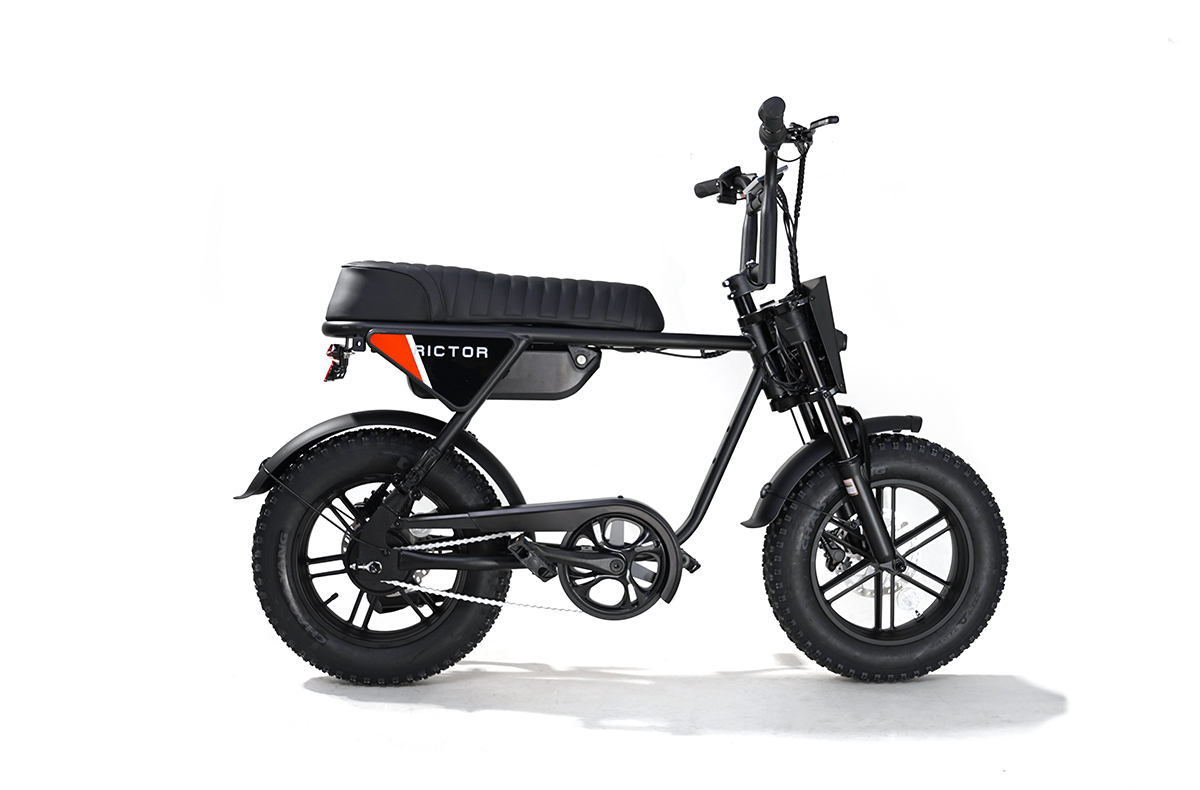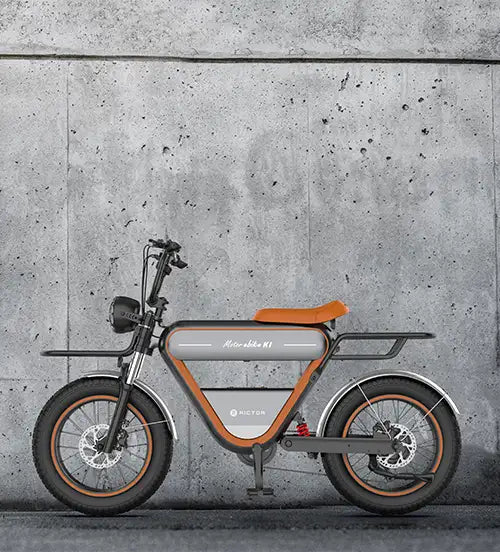
Choosing Your Ride: Fat Tires vs. Thin Tires for Electric Bikes
In the world of electric bikes, when looking solely from a tire perspective, there are two distinct choices: fat tire electric bikes or regular electric bikes with conventional tires. Which one is better? You'll find out in this comprehensive guide.
Fat Tires: Stability and All Terrain Capability
Fat tires, usually between 3.8 to 5 inches wide, have become popular with riders who want to go beyond just streets. These wide tires spread your weight across more ground, creating a different riding experience.
The bigger contact patch gives you better grip on challenging surfaces like gravel, sand, snow, and muddy trails. This extra grip means more confident handling where thin tires might slip. For people who ride in forests, on beaches, or in winter, fat tires make it possible to ride in places you normally couldn't go.
Fat tires also work like natural shock absorbers, soaking up bumps and rough spots without needing fancy suspension. This cushioning reduces the vibration that travels to your body, so you feel less tired after long rides.
SEE ALSO How Long Do Fat Tire Electric Bike Last?
Thin Tires: Speed and Efficiency
Thin tires, usually between 1.5 to 2.2 inches wide, are the traditional choice for efficient riding. These narrower options create less rolling resistance, letting riders go faster while using less battery power—important for commuters worried about range or those wanting a sportier experience.
The smaller contact patch means quicker acceleration from stops and more responsive handling on smooth roads. For city riding with frequent stops and starts, this agility helps navigate traffic better and save energy.
Weight reduction is another advantage, as thin tires contribute to a lighter e-bike. This lower weight makes climbing hills easier and extends battery range, especially important for riders who can't charge during the day.
Fat Tires vs. Thin Tires
| Feature | Fat Tires | Thin Tires | Plus-Sized |
|---|---|---|---|
| Terrain | Great off-road OK on pavement |
Great on pavement Poor off-road |
Good for both |
| Comfort | Excellent | Fair | Good |
| Range | Fair | Excellent | Good |
| Weight | Heavy | Light | Medium |
| Cost | Higher | Lower | Medium |
| Best For | Rough terrain Comfort riders All weather use |
City streets Maximum range Speed |
Mixed terrain Versatility |
Practical Considerations For Your Decision
Matching Tires to Where You Ride
The most important factor in choosing is honestly thinking about where you ride most often. For riders who mostly use good city streets with occasional light gravel, thin tires usually provide the best efficiency.
Those who regularly ride on varied terrain—from pavement to trails, sandy paths, or snowy routes—benefit from fat tires' adaptability. The confidence from better traction often outweighs efficiency concerns for explorers rather than pure commuters.
Seasonal weather matters in colder regions where winter conditions affect riding. Fat tires work much better in snow and slush, extending your riding season long after thin tires would become unsafe.
Battery Life and Range
Fat tires typically reduce range by 10-20% compared to thin tires under the same conditions due to increased rolling resistance. This difference matters most on long rides that push your battery's limits. For shorter commutes, the practical impact is much smaller.
Modern tire technology has narrowed this gap through advanced rubber compounds and tread patterns. High-quality fat tires now include low-resistance center treads with more aggressive side patterns, giving reasonable efficiency on smooth surfaces while maintaining off-road capability.
The Middle Option
For riders caught between fat and thin tire extremes, "plus-sized" tires (2.6 to 3.0 inches) offer a good compromise. They deliver better stability and comfort compared to thin tires while avoiding the significant weight and efficiency drawbacks of fat tires.
Plus-sized options have become popular among trail-oriented e-bike designs seeking to balance off-road capability with reasonable on-road performance. Their moderate width provides good traction without needing specialized frames that true fat tires require.
Cost Implications
Fat tire e-bikes typically cost more due to specialized frame designs, wider components, and reinforced structures. This price difference reflects real engineering requirements rather than just marketing.
Replacement costs also favor thin tires, with premium fat tire options often costing 50-100% more than similar quality thin alternatives. This ongoing expense adds up for high-mileage riders needing multiple tire replacements.
Making Your Final Decision
The best choice requires honest thinking about your actual riding patterns rather than imagined scenarios. Many riders buy fat tires thinking they'll go off-road regularly but never do, sacrificing efficiency for unused capabilities.
Test riding is invaluable, as differences between tire types go beyond specifications to include feel and confidence. If possible, arrange extended test rides on terrain matching your typical riding environment.
Consider your physical condition, riding experience, and comfort preferences. Less experienced riders often benefit from fat tires' forgiving nature, while those with extensive cycling backgrounds might prefer thin tires' responsive handling.
Conclusion
The fat versus thin tire decision fundamentally shapes your riding experience more than any single upgrade. Rather than viewing either option as universally better, match specific tire characteristics to your individual needs, environments, and preferences.
Whether navigating urban commutes with efficient thin tires or exploring varied terrain with confidence-inspiring fat alternatives, the right selection enhances your electric-assisted cycling experience while reducing environmental impact and increasing personal mobility.
FAQs
How much does tire width affect e-bike battery range?
Fat tires typically reduce range by 10-20% compared to thin tires under the same conditions due to increased rolling resistance. However, modern tire materials and proper pressure management can minimize this difference, while larger capacity batteries often make up for increased energy needs on fat tire models.
Can I switch between fat and thin tires on the same e-bike?
Most e-bikes are designed specifically for either fat or thin tires, with frame clearance, rim width, and component optimization preventing simple switching. Some "plus-sized" compatible frames offer limited flexibility, but complete conversion typically requires special knowledge and significant component changes beyond just the tires themselves.
Do fat tires make e-bikes safer for beginning riders?
Fat tires generally provide better stability, improved traction on various surfaces, and more forgiving handling that helps inexperienced riders. The increased confidence and reduced chance of losing control in challenging conditions create real safety advantages for beginners, particularly on mixed terrain routes or in bad weather.





